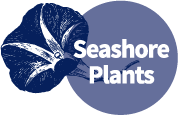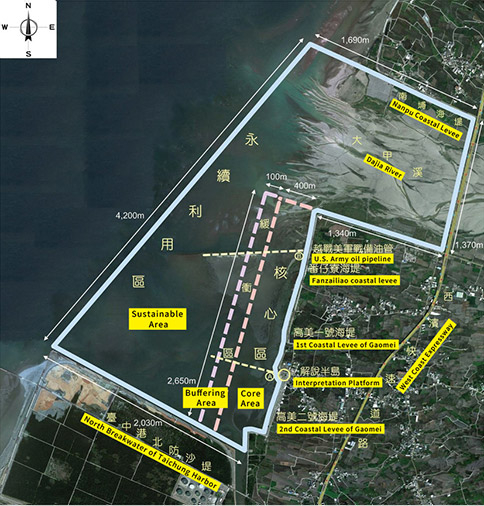
According to previous research, there are 105 species of plants from 27 genera living in Gaomei Wetlands and wetlands outside the groin. The two iconic plants in Gaomei Wetlands are Bolboschoenus planiculmis and the endemic Hygrophila pogonocalyx. Bolboschoenus planiculmis is a native marsh grass species that originated in the coast of Changhua County. The estuary of Dadu River used to have the largest area of B. planiculmis but due to overdevelopment and poor regulation by the government, the grasses of the coast of Changhua have died out. Currently, the largest area of B. planiculmis is in Gaomei Wetlands. In restoring coastal plants or preserving wetlands, it is thought that the restoration and preservation of mangroves is the key. For a long time, many NGOs and government agencies restored wetlands by planting mangrove species. However, the mudflats in Central Taiwan are different from the shores of other regions. Rather than mangroves, B. planiculmis is the right coastal plant for the mudflats. It possesses the same ecological functions as the mangroves and is much more important for the coasts of Changhua but is not as well known as mangroves. Bolboschoenus planiculmis , like mangroves, are able to shelter bottom dwellers and animals like crabs and fish. In fall and winter, the green grass withers and exposes these bottom dwellers, which become food resources for winter resident birds. Mangroves, on the other hand, prohibit waterbirds from foraging, as the dense canopy of this non-natie plant would reduce waterbird habitats. Arguably, the biggest scenic feature of Gaomei Wetlands is the interaction between the grass and waterbirds. Another treasure in the wetland is the endemic H. pogonocalyx. Its small purple flowers are particularly adorable among the green grass. However, this species also suffers from habitat loss due to expanding farmlands and development of ditches and pond marshes, causing it to become a critically endangered species.









